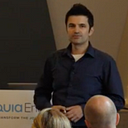What if it's actually a metaphorical re-make of the classic tale of "Romeo and Juliet" combined with elements from "Pinocchio"? A story of loyalty, fate, and the consequences of our choices.
The protagonist, Henry Hill, is like Pinocchio, a puppet controlled by the whims of the criminal underworld. He's a man torn between his loyalty to his "family" and his growing affection for Karen, the Juliet to his Romeo. Their love is forbidden, just like the love between the two feuding families in Shakespeare's classic tragedy.
But unlike Romeo and Juliet, Henry and Karen's love story is not a tale of star-crossed lovers. It's a cautionary tale of the dangers of blind loyalty and the consequences of choosing the wrong path. Henry's fate is sealed the moment he chooses to follow his father's footsteps into a life of crime. His journey is a metaphor for the fall of man, much like Pinocchio's journey to become a real boy.
In "Goodfellas," Scorsese uses violence and gore not for entertainment value, but to illustrate the brutal reality of the criminal world. The infamous " Copa Cabana " scene is a prime example. It's a graphic display of the violence that permeates this world, and the price one must pay for loyalty. Henry's acceptance into the mob is sealed with a bloody kiss, a metaphor for the sacrifice he must make to be accepted into this new family.
The film's narrative structure, told through Henry's perspective, is a masterclass in storytelling. It's a technique Scorsese perfected in films like "Taxi Driver" and "Raging Bull." By using narration, Scorsese allows the audience to experience the world through Henry's eyes, to feel his conflicts and struggles. It's a powerful tool that creates a sense of intimacy and immediacy, drawing the audience into the story.
According to a recent study by the University of California, Los Angeles, the use of narration in films like "Goodfellas" can increase audience engagement and empathy. It's a technique that allows the filmmaker to communicate themes and ideas that would be lost in a purely visual narrative.
In "Goodfellas," Scorsese uses symbolism to reinforce the themes of loyalty and fate. The recurring motif of the apron, for example, represents the characters' bond to their criminal family. It's a symbol of their loyalty, their badge of honor. When Henry finally discards the apron, it's a powerful moment of redemption, a sign that he's breaking free from the cycle of violence and loyalty that has defined his life.
The film's climax, the infamous "Lufthansa heist," is a turning point in Henry's journey. It's a moment of reckoning, where his loyalty is tested and he must choose between his criminal family and his newfound love for Karen. The heist is a metaphor for the consequences of our choices, how one moment can change the course of our lives forever.
